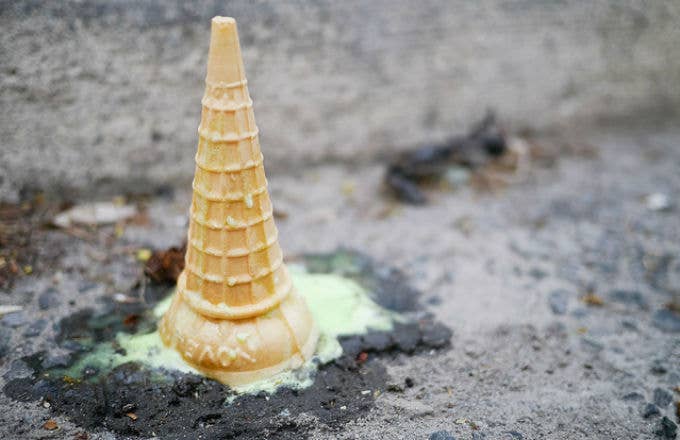
In a world where things are often too good to be true, like America's first pizza ATM or Snoop Dogg and Martha Stewart teaming up for a TV show hosting celebrity dinner parties, we knew the five second rule couldn’t possibly be real.
Researchers from New Jersey's Rutgers University have disproved the rule in a study published this month in the American Society for Microbiology's journal. If you're sitting there scratching your head: the five second rule, which some live by, is the belief that food that's been dropped on the floor is safe to eat as long as you pick it up within five seconds. Why? Because people have long sworn it takes more than a few seconds for fallen food to become contaminated with bacteria.
For the study, led by professor and researcher Donald Schaffner, the foods tested were bread, bread with butter, gummy candy, and watermelon. These foods were tested from one second to 300 seconds on different floor surfaces: carpet, ceramic tile, stainless steel, and wood. The study showed that in some cases bacteria transfers to food immediately, disproving the rule. It also showed that while, yes, the longer a food remains dropped the more bacteria it acquires, it also depends on what kind of food it is and the surface on which it’s been dropped.
"Bacteria don't have legs, they move with the moisture, and the wetter the food, the higher the risk of transfer," Schaffner toldRutgers Today. "Also, longer food contact times usually result in the transfer of more bacteria from each surface to food."
But if you're going to eat your food off the floor you may as well do it off of a carpet, as the study showed foods that fell on carpeting had lower contamination rates.

